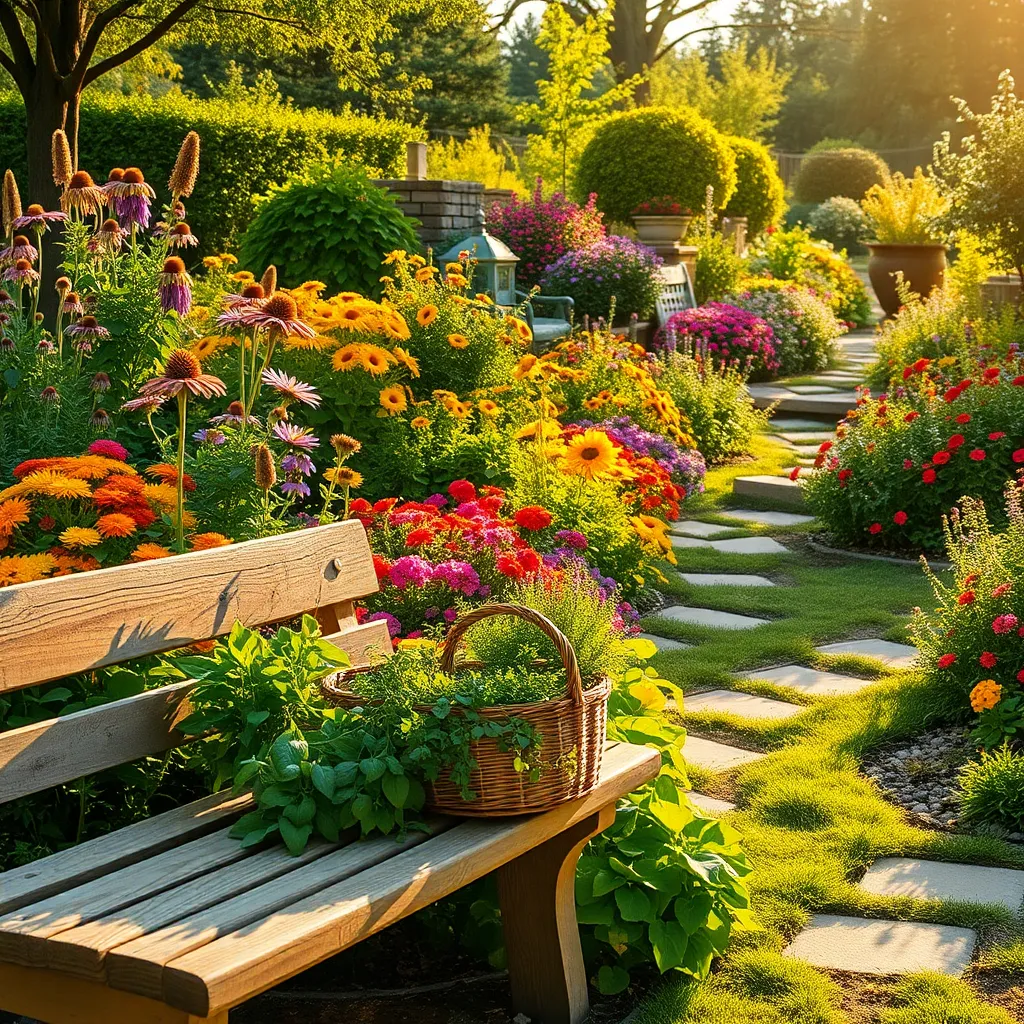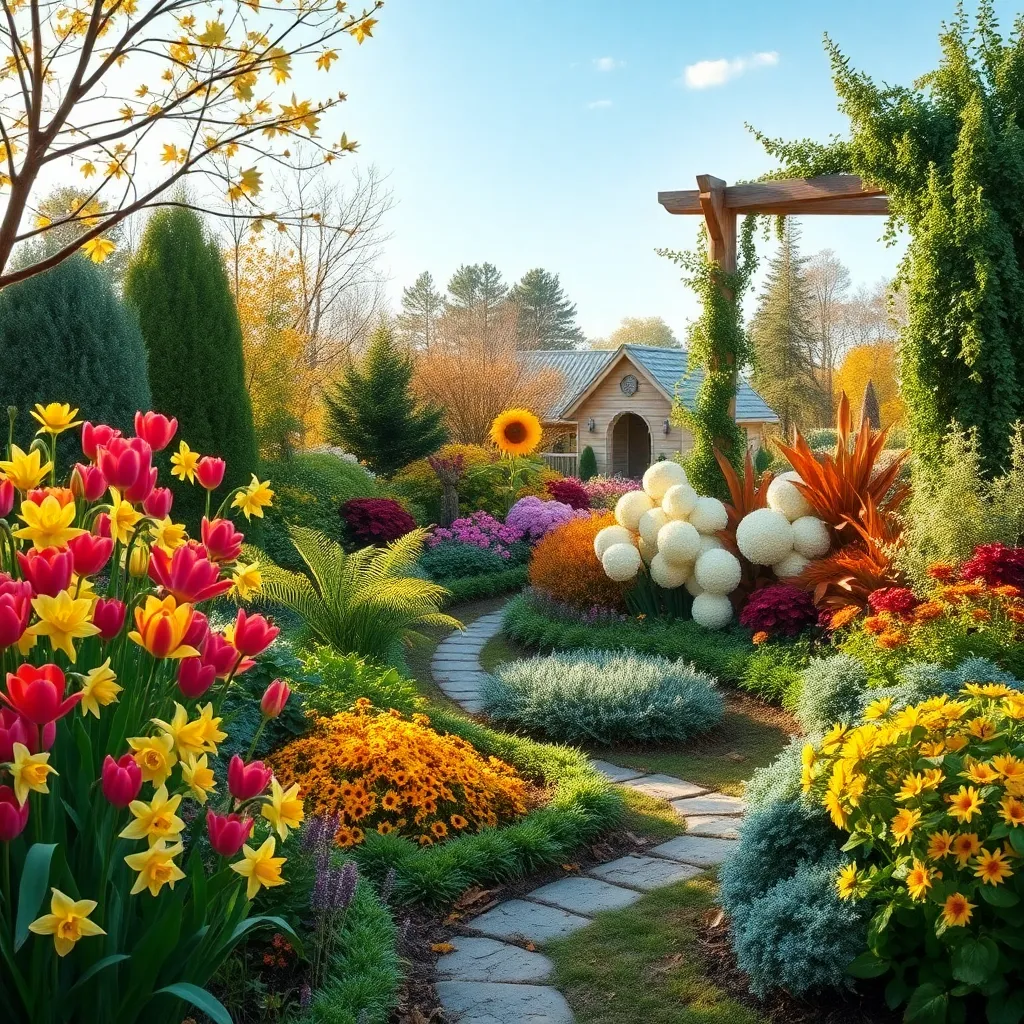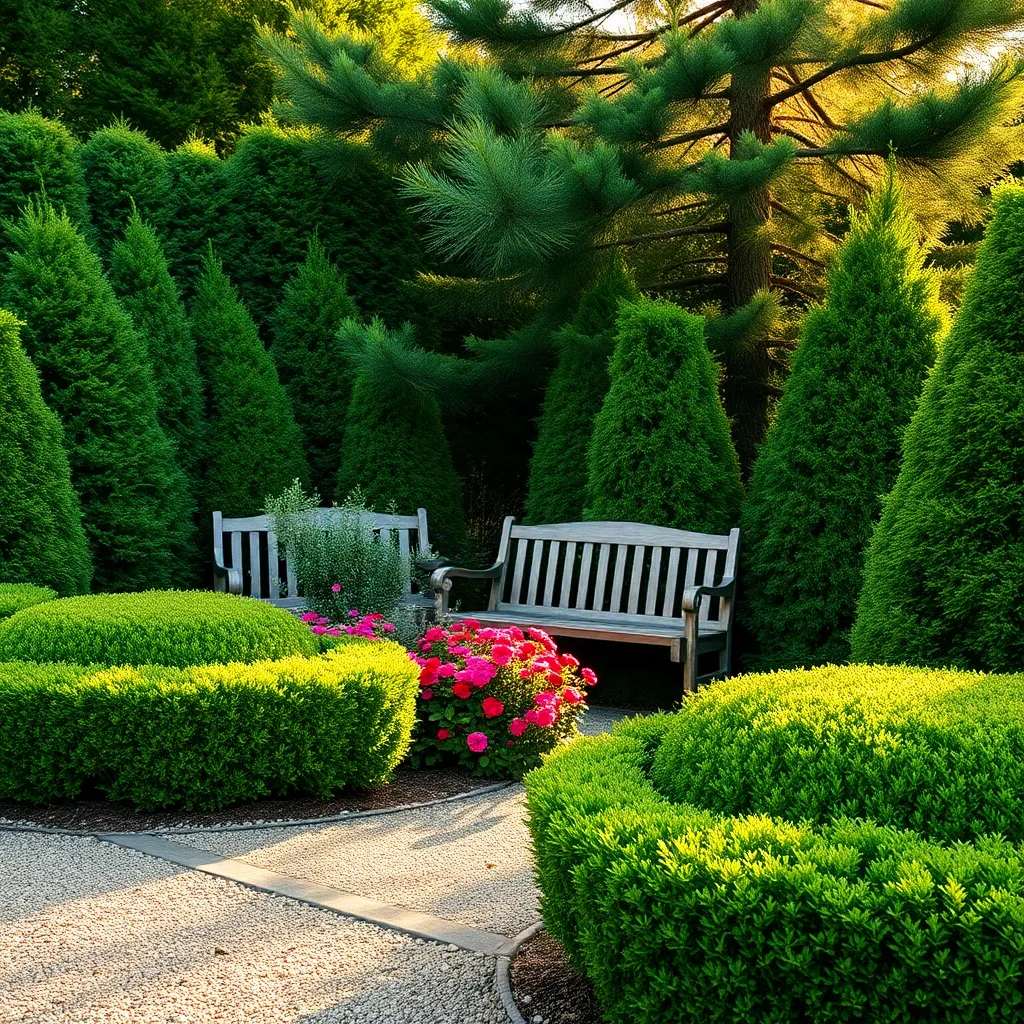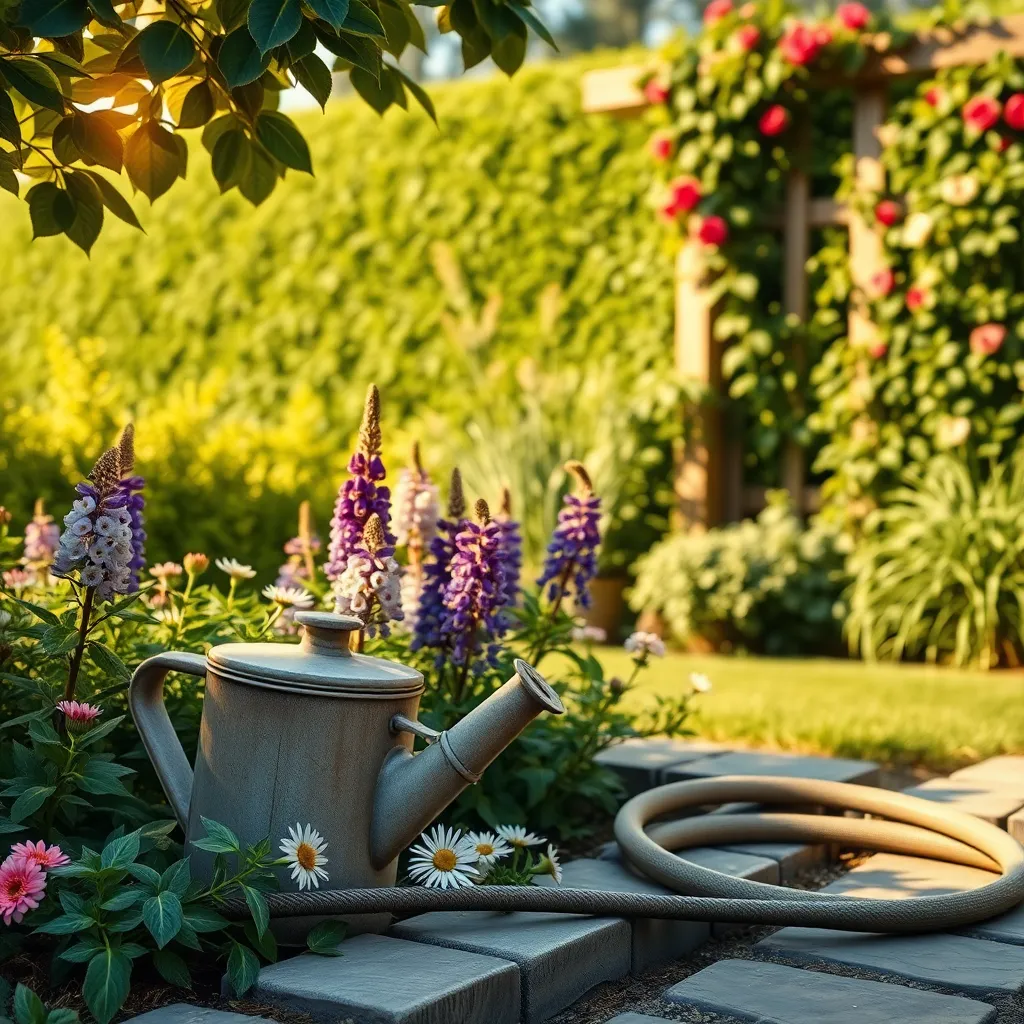Imagine stepping into your garden and being greeted by a vibrant tapestry of colors and textures, no matter the season. Creating a garden that exudes beauty year-round is not only possible but also immensely rewarding, offering both novice and seasoned gardeners a canvas to express their creativity and nurture a living masterpiece. Whether you are just beginning your gardening journey or have years of experience under your belt, there’s always room for inspiration and improvement. This article will guide you through the art and science of maintaining a stunning garden every month of the year.
Embarking on this journey, you’ll discover the secrets to selecting plants that thrive in their respective seasons, ensuring that your garden remains a continuous flow of life and color. We will delve into strategic planting techniques, soil care, and innovative design ideas that can transform any garden space into a breathtaking sanctuary. You’ll learn how to anticipate the needs of your plants and adapt to the changing seasons with ease. From choosing the right perennials to understanding the nuances of garden maintenance, this guide is designed to equip you with practical, actionable advice.
The allure of a year-round garden is its ability to captivate and soothe, providing a personal retreat that evolves with time. As we explore the various ways to enrich your garden, you’ll gain the confidence to experiment and tailor your space to reflect your unique vision and personality. By the end of this article, you’ll be equipped to transform your outdoor area into a place of perennial beauty, ready to inspire and delight at every turn. Let’s embark on this horticultural adventure together, where each season brings new opportunities to cultivate and celebrate the wonders of nature.
Select Diverse Seasonal Plants

To create a garden that thrives throughout the year, it’s essential to select a variety of plants that flourish in different seasons. By choosing plants with staggered blooming times, you can ensure that your garden remains vibrant and colorful, no matter the month.
Consider incorporating spring-blooming perennials like tulips and daffodils to kickstart your garden’s beauty after winter. These plants thrive in well-drained soil and prefer a spot with plenty of sunlight, making them ideal for brightening up your garden early in the year.
For summer, opt for heat-tolerant plants such as lavender and coneflowers, which can withstand the warmer months and add a splash of color. Regular watering, especially during dry spells, and occasional deadheading will keep these plants looking their best.
As autumn approaches, incorporate plants like asters and chrysanthemums to keep your garden lively. These hardy plants are perfect for the cooler weather, and they thrive in nutrient-rich soil enriched with compost or organic matter.
In winter, evergreen shrubs like holly and boxwood can provide structure and greenery when other plants have gone dormant. They require minimal care, needing only occasional watering if the weather is particularly dry, making them a low-maintenance option for year-round interest.
By diversifying your plant selection across the seasons, your garden will not only be beautiful but also sustainable and resilient. This approach ensures that you enjoy a dynamic landscape, with each season offering its own unique charm and visual appeal.
Plan a Year-Round Layout

Creating a year-round garden layout involves thoughtful planning to ensure continuous visual interest and productivity. Start by assessing your garden’s current layout and identifying areas that could be enhanced with new plantings or structural elements.
Consider incorporating a mix of evergreen shrubs, perennials, and annuals to maintain structure and color throughout the year. Evergreens provide a constant backdrop, while perennials can offer a variety of blooms and textures in different seasons.
Utilize the principles of succession planting to maximize your garden’s productivity. By planting fast-growing crops followed by slower-maturing ones, you can keep your garden producing fresh vegetables and flowers across multiple seasons.
Place taller plants like sunflowers or trellised beans at the back of the beds to create layers and add depth to your garden. In front, plant shorter species such as marigolds or lettuces to fill gaps and ensure a lush, full appearance.
Advanced gardeners might experiment with intercropping, which involves growing complementary plants together to optimize space and improve soil fertility. For example, pair nitrogen-fixing legumes with nutrient-hungry vegetables to naturally enrich the soil while reducing pest issues.
Make sure to account for microclimates within your garden, as these can significantly affect plant growth and health. Consider the specific light, moisture, and soil conditions when selecting plants for each area, ensuring a healthy and vibrant garden all year round.
Enhance Soil with Compost

To enhance your soil and make your garden thrive, start by incorporating compost. Compost is a natural, nutrient-rich amendment that improves soil structure, promotes healthy root growth, and boosts plant resilience.
Begin your composting journey by collecting kitchen scraps like vegetable peels, coffee grounds, and eggshells. Avoid adding meat, dairy, or oily foods as these can attract pests and slow down the decomposition process.
Balance your compost pile with a mix of green materials, like grass clippings, and brown materials, such as dried leaves or shredded paper. This balance ensures that your compost heats up adequately, speeding up the breakdown process and killing off potential pathogens.
Turn the compost pile every few weeks to aerate it and speed up decomposition. If you notice your compost is too dry, sprinkle some water to maintain a moisture level similar to a damp sponge.
Once your compost is dark and crumbly, it’s ready to enrich your garden soil. Spread a layer of compost about one to two inches thick over your garden beds and gently work it into the topsoil to maximize its benefits.
For more experienced gardeners, consider creating a compost tea by steeping finished compost in water. This liquid fertilizer can be applied to your plants’ foliage or directly to the soil to give them an extra boost of nutrients.
Incorporate Evergreens for Structure

Incorporating evergreens into your garden is a great way to ensure year-round structure and greenery. These plants provide a consistent backdrop against which seasonal flowers can shine, while also offering shelter for wildlife.
Begin by selecting the right evergreens for your climate zone to ensure they thrive. Choose varieties like boxwood, yew, or juniper, which are known for their resilience and low maintenance requirements.
When planting evergreens, ensure they have well-draining soil and adequate space to grow. It’s important to water them regularly, especially during their first year, to help establish strong roots.
Pruning is another critical aspect of caring for evergreens and maintaining their shape. Trim them in late winter or early spring before new growth starts, using sharp, clean tools to avoid disease transmission.
For a more advanced touch, consider using evergreens as a natural windbreak or privacy screen. By planting them in strategic rows, you can create a living wall that enhances both the beauty and functionality of your garden.
Maintain Consistent Watering Schedule

Establishing a consistent watering schedule is crucial for maintaining a healthy garden throughout the year. Plants thrive best when they receive a regular supply of water, which helps them develop strong roots and resist diseases. Consider the specific needs of each plant species in your garden, as some may require more frequent watering than others. For example, succulents and cacti need less frequent watering compared to annual flowers or vegetables.
To optimize watering, it’s important to water your garden in the early morning or late afternoon. This timing reduces evaporation and allows plants to absorb moisture effectively. Investing in a drip irrigation system can help automate this process, providing consistent water delivery directly to the roots. Drip systems can be especially beneficial during hot summer months when water conservation is critical.
For those who prefer manual watering, using a soaker hose is a practical alternative. It delivers water slowly and evenly, ensuring deep penetration into the soil. Remember to check the soil moisture regularly by sticking your finger about an inch into the ground. If it feels dry at this depth, it’s time to water.
Adjust your watering schedule according to the season and weather conditions. In cooler months, plants generally require less water because of reduced evaporation rates. During rainy periods, you can cut back on watering to prevent over-saturation, which can lead to root rot. Maintaining a flexible approach will help you adapt to your garden’s ever-changing needs and ensure a lush, thriving landscape year-round.
Conclusion: Growing Success with These Plants
In nurturing a garden, much like cultivating a relationship, it’s essential to focus on the fundamentals: communication, adaptability, nurturing, shared vision, and consistency. We’ve explored how communication mirrors planning your garden layout, ensuring every element has room to flourish. Adaptability is key as seasons change, requiring adjustments in your approach. Nurturing involves providing the right nutrients, akin to offering emotional support and understanding. A shared vision keeps everyone aligned, just as a garden thrives under a cohesive design. Finally, consistency in care fosters growth and resilience, both in plants and partnerships.
As an immediate step, take a moment to reflect on one area in your relationship that could benefit from a little extra care or attention—perhaps a conversation that needs to be had or a simple gesture of appreciation. By acting today, you plant the seeds for a more vibrant connection tomorrow.
Remember, successful relationships, like thriving gardens, are built over time. Bookmark this article as a handy guide to revisit these principles as you navigate the intricate seasons of your relationship journey. With dedication and love, you can watch your relationship blossom into a beautiful, enduring partnership—one that stands the test of time and flourishes year-round.

